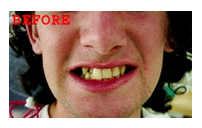Dental Bridge
A dental bridge is one method to fill a space created by a missing tooth (or teeth). A dental bridge is made up of 2-3 or more dental crowns for the teeth on either side of the gap and a replacement tooth in between. The dental bridge type you choose will depend on the condition of your smile, your cost goals, and the cosmetic results you desire. Whether you are looking for a temporary or permanent tooth-loss solution, there is a dental bridge ideally suited for your needs. There are basically 3 types of dental bridges — Traditional bridge, Cantilever bridge, and Maryland-bonded bridge.
- Traditional bridges involve creating a crown for the tooth or implant on either side of the missing tooth, with a pontic in between. Traditional bridges are the most common type of bridge and are made of either porcelain fused to metal or ceramics.
- Cantilever bridges are used when there are adjacent teeth on only one side of the missing tooth or teeth.
- Maryland-bonded bridges (also called a resin-bonded bridge or a Maryland bridge) are made of plastic teeth and gums supported by a metal framework. Metal wings on each side of the bridge are bonded to your existing teeth.
FAQs - Frequently Asked Questions
What are the Benefits of Dental Bridges?
- Restore your smile
- Restore your ability to properly chew and speak
- Maintain the shape of your face
- Distribute the forces in your bite properly by replacing missing teeth
- Prevent remaining teeth from drifting out of position
How long do Dental Bridges Last?
Dental bridges can last 5 to 10 years and even longer. With good oral hygiene and regular prophylaxis, it is NOT unusual for the life span of a fixed bridge to be over 10 years.
Will it be difficult to eat with a Dental Bridge?
Replacing missing teeth should actually make eating easier. Until you become accustomed to the bridge, eat soft foods that have been cut into small pieces.
Will the Dental Bridge change how I speak?
It can be difficult to speak clearly when teeth are missing in the front or anterior areas. Wearing a dental bridge with the anterior teeth in their proper relationship will help you speak properly.
How Do I Care for My Dental Bridge?
It is important to keep your remaining teeth healthy and strong as the success of the bridge (depending on the type selected) depends on the solid foundation offered by the surrounding teeth. Brushing twice a day and flossing daily helps prevent tooth decay and gum disease that can lead to tooth loss. Your dentist or dental hygienist can demonstrate how to properly brush and floss your teeth. Keeping a regular cleaning schedule will help diagnose problems at an early stage when treatment has a better prognosis. Selecting a balanced diet for proper nutrition is also important.
Treatment Procedures for Dental Bridge
During the first visits, the abutment teeth are prepared. Preparation involves recontouring these teeth by removing a portion of enamel to allow room for a crown to be placed over them. Next, impressions of your teeth are made, which serve as a model from which the bridge, pontic, and crowns will be made by a dental laboratory. Your dentist will make a temporary bridge for you to wear to protect the exposed teeth and gums while your bridge is being made.
During the following visits, and the new permanent bridge will be checked and adjusted to achieve a proper fit. Multiple visits may be required to check the fit of the bridge framework and bite and this is dependent on each individual's case. Once the permanent bridge is fitting perfectly, it will be permanently cemented into place.

Post Operative Care Instructions
- After teeth preparation, you will also notice that we have placed a temporary bridge on your teeth. This is done to protect what is underneath and it only stays on with a temporary cement so it could come off although it isn’t likely if you are careful. If it does happen to come off, please call our clinic and we will put it back on for you. This will only take a few minutes so it won’t take up too much of your time.
- Meanwhile, stay away from anything sticky such as gum etc. You shouldn’t experience any problems and after your next appointment you will be able to function normally.
- You may find some sensitivity in the next few days but it shouldn’t be too painful. It is possible that the tooth might be sensitive to hot or cold so try to avoid any extreme temperature changes.
- Please brush and floss frequently and carefully.
Clinical Case Example
Upper anterior teeth show numerous large defects and very crooked teeth. Dental bridges are the treatment of choice for this case to restore the beauty and function.
| BEFORE | AFTER |
|---|---|

|

|

